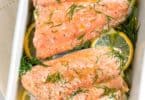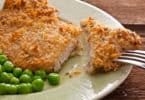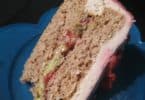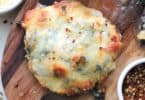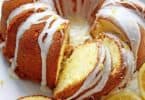Bacon and brown sugar may sound like an odd combination, but once you have your first taste, you’ll be a believer. That perfect combination of salty and sweet is ideal for most tastebuds.
There are a few benefits to baking instead of frying bacon. The first one is that cleanup is as easy as can be. Since you’re not frying it on your stovetop, there aren’t any splashes of grease to clean up afterwards. Secondly, baking bacon is much healthier than frying it. By frying bacon, you’re basically cooking it in its own grease. Baking lets the fat melt off the bacon, leaving you with a leaner cut of pork.
Sugar-coated bacon is a treat that many diabetics allow themselves. Baking the bacon makes it less fattening than pan frying it and by swapping out sugar for Splenda, you’re not packing in much sugar, either.
Recipe for Baking Bacon with Brown Sugar
To start, gather your minimal ingredients: one pound of thick-cut bacon and 1/4 cup of light brown sugar. Preheat your oven to 375 degrees Fahrenheit. If your oven doesn’t have a timer on it, preheat it for approximately 15 minutes to make sure it’s warm enough. Use parchment paper to line a baking sheet. Lay strips of bacon side-by-side. If you don’t have enough room to fit all the bacon you want to bake, it’s okay to overlap slices slightly. Sprinkle the bacon with brown sugar; it will easily stick, because raw bacon is slightly wet and sticky. When you’re finished adding brown sugar, place the baking pan on the top rack of the oven. Bake for approximately 35 minutes. Check to make sure the bacon is browned and crispy to your liking. You may need to bake for an additional five minutes to get it crispy enough. Serve as soon as it’s finished cooking. It’s likely that some bacon strips will be more done than others, because most ovens don’t bake perfectly evenly.
Recipe Alternatives and Tips
• Some people recommend that by lining the baking pan with aluminum foil instead of parchment paper, cleanup is easier and the bacon cooks faster.
• If you want to raise the temperature to 400 degrees, it will only take 20 minutes to bake the bacon.
• Even at 375 degrees, many people recommend checking the bacon halfway through to make sure it’s not left in too long.
• Don’t cook bacon that’s fresh out of the refrigerator and still cold. You want room temperature bacon, instead. Let it set out on the counter for a bit before cooking it. By using room temperature bacon, the fat will be softer and able to soak up more brown sugar.
• Play around with different flavors. Some people prefer dark brown sugar while others prefer light brown sugar.
• After sprinkling sugar over the bacon, let it sit out for a few minutes so that it can “marinate.”
• If you want to fry the bacon, you can, even after it’s been coated with brown sugar.
Tips for Frying Bacon
• Use a large frying pan so that you can cook as many strips of bacon at the same time as possible.
• Don’t leave too many spaces in the pan. Doing so will burn the butter or cooking oil that’s coating the pan. Eventually, this burnt cooking fat will get on the bacon, too, which will affect the taste.
• Don’t overlap the bacon if you’re cooking it on the stovetop. This will leave portions of the bacon uncooked.
• The pan should be room temperature, just like the bacon. Don’t use a pan that’s hot from being cooked in. Don’t heat the pan before putting the bacon in it, either. This can scorch the bacon.
• Flip the bacon just once, midway through cooking. There’s no reason to flip the bacon over several times. If you’re cooking the bacon over medium heat, you should flip it after about ten minutes.
• Once the bacon is cooked through, put it on a paper towel to sop up the grease.
Related Video:
<>


